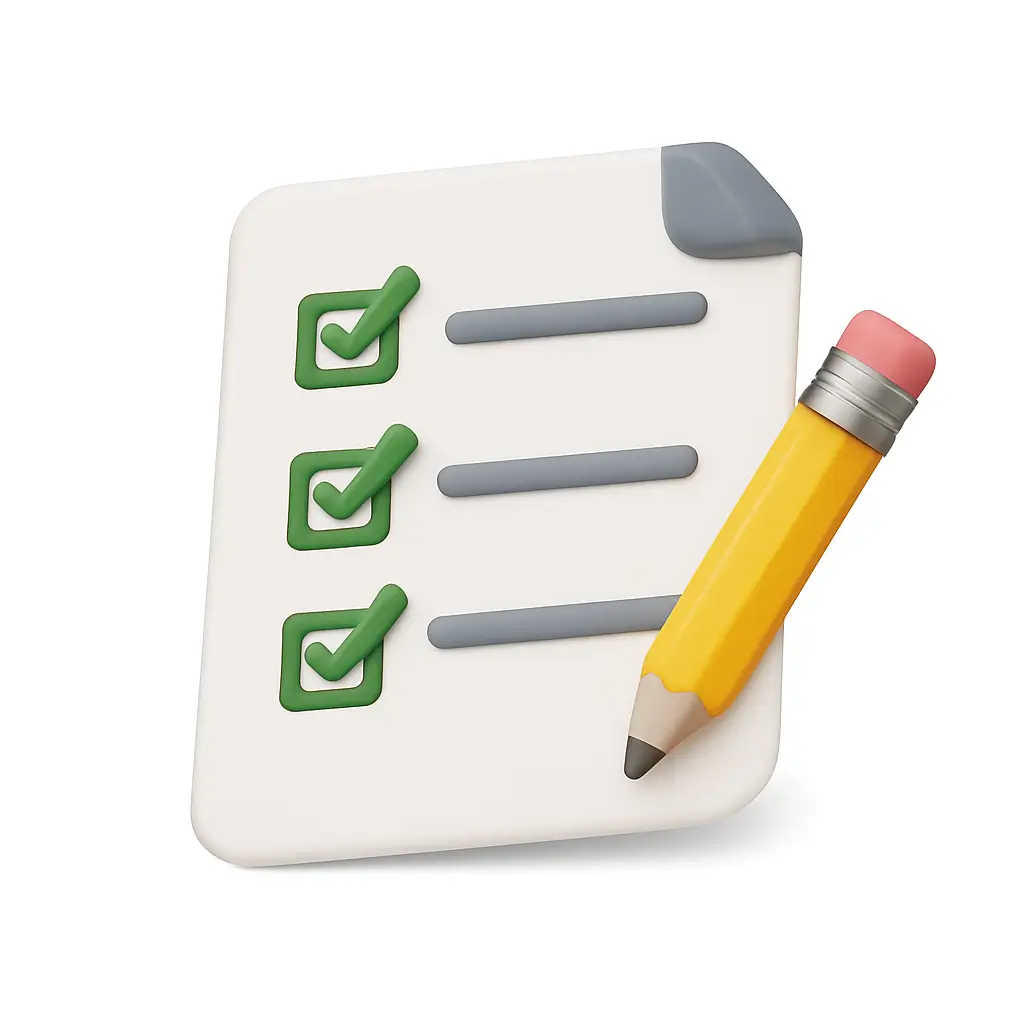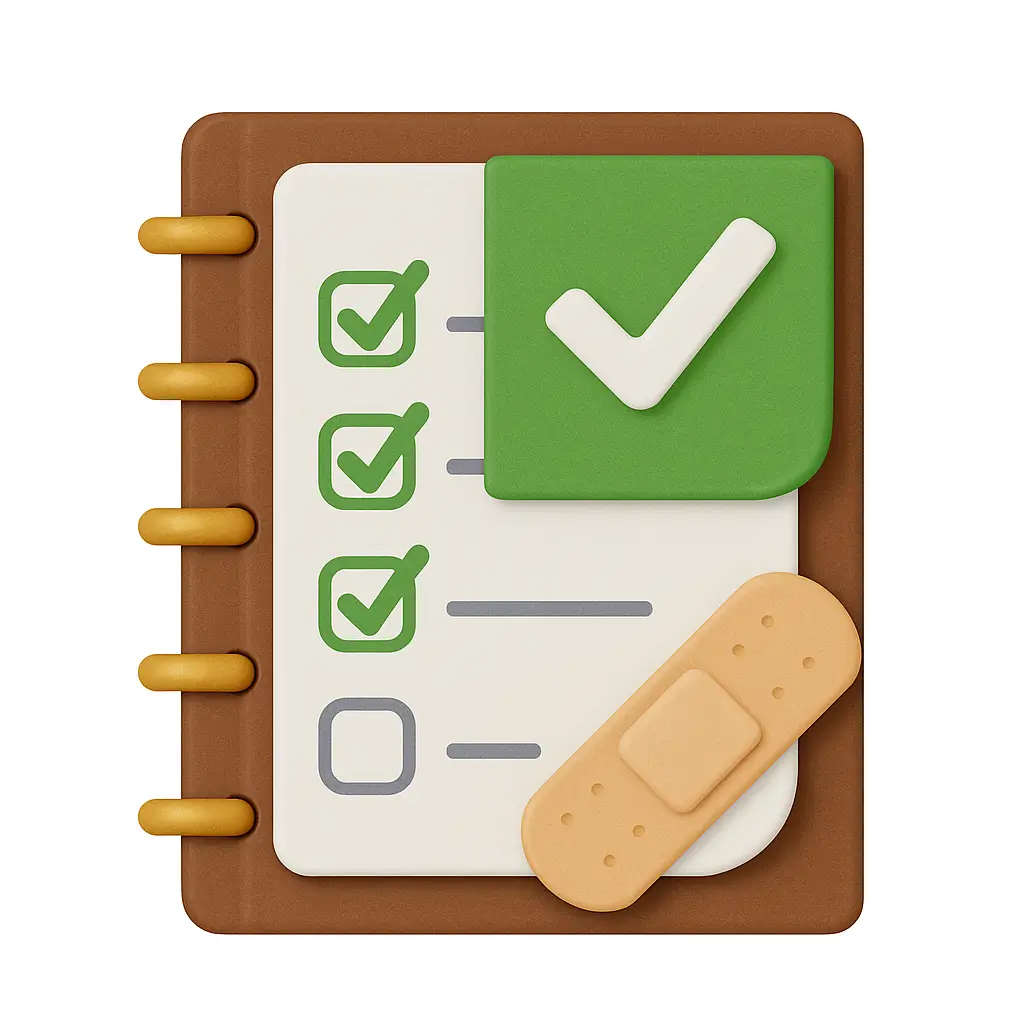Power of Done Lists
Shift from to-do to done to boost motivation, visibility, and momentum.
July 3, 2025 · 4 min read

📋 The problem with to-do lists
Marcus checks his to-do list at 6 PM.
Twelve items remain unchecked. Three new ones appeared during the day.
He worked for nine hours straight. But all he sees is what's left undone.
Sound familiar?
Traditional to-do lists have a fatal flaw: they highlight what you haven't accomplished. This creates a cycle of feeling behind, overwhelmed, and unproductive.
There's a better way.
What is a done list?
A done list is exactly what it sounds like. Instead of tracking what you need to do, you track what you've already completed.
The concept is simple:
-
Write down tasks as you finish them
-
Include both planned and unplanned work
-
Review your progress at day's end
This shift in focus changes everything.
Why done lists beat to‑dos
They Combat Imposter Syndrome
When you only see unfinished tasks, your brain tricks you into thinking you're not productive. A done list provides concrete evidence of your accomplishments.
Research backs this up: People who track completed tasks report higher job satisfaction and lower stress levels.
They Capture Invisible Work
Your to-do list doesn't include:
- Helping a colleague with a problem
- Fixing an unexpected technical issue
- Taking an important phone call
- Responding to urgent emails
A done list captures this "invisible work" that fills your day but never gets recognized.
They Build Momentum
Seeing a growing list of accomplishments creates positive momentum. Each completed item reinforces your sense of progress and capability.
The science behind it
Psychologists call this the "progress principle." Small wins throughout the day boost motivation and engagement more than any other factor.
Here's what happens in your brain:
- Completing tasks releases dopamine
- Dopamine creates feelings of satisfaction
- Satisfaction motivates continued effort
Done lists create a positive feedback loop that to-do lists can't match.
How to start
Choose Your Format
Digital options:
- Simple notes app
- Dedicated task apps with "completed" sections
- Spreadsheet with timestamps
Analog options:
- Notebook with daily pages
- Sticky notes moved to a "done" column
- Whiteboard with completed tasks
Pick whatever feels most natural to you.
Include Everything
Don't just track major projects. Include:
- Emails sent
- Calls made
- Problems solved
- People helped
- Skills practiced
- Decisions made
The goal is to see the full scope of your contributions.
Add Context
Instead of just "Meeting with Sarah," write "Meeting with Sarah about Q4 budget planning." This helps you remember the value you provided.
Review Daily
Spend five minutes each evening reviewing your done list. Notice patterns, celebrate wins, and acknowledge your progress.
Avoid these mistakes
Making It Too Complicated
Don't create elaborate systems with categories, time tracking, and complex formatting. Keep it simple or you won't stick with it.
Only Including "Important" Tasks
Small tasks matter too. Organizing your desk, updating your calendar, or helping a teammate all contribute to your overall effectiveness.
Comparing to Others
Your done list is personal. Don't measure your accomplishments against someone else's. Focus on your own progress and growth.
Advanced tips
The Weekly Review
Every Friday, compile your daily done lists into a weekly summary. This gives you a broader view of your accomplishments and helps with performance reviews.
The Gratitude Twist
Add a brief note about how each completed task helped others or moved projects forward. This reinforces the value of your work.
The Learning Log
Include new things you learned while completing tasks. This turns your done list into a personal development tool.
Make the mental shift
Switching from to-do to done lists requires a mindset change:
From: "Look at everything I still need to do"
To: "Look at everything I've already accomplished"
From: "I'm so behind"
To: "I'm making steady progress"
From: "I didn't get enough done today"
To: "I accomplished more than I realized"
This isn't about lowering standards. It's about recognizing the work you're already doing.
Your first week
Day 1-2: Start simple. Just write down three things you completed each day.
Day 3-4: Expand to include smaller tasks and unexpected work.
Day 5-7: Add brief context to each item and review your list each evening.
Notice how your perception of your productivity changes.
The compound effect
Done lists create a compound effect over time:
- Week 1: You notice you accomplish more than you thought
- Month 1: You feel more confident about your contributions
- Quarter 1: You have concrete examples for performance reviews
- Year 1: You've built a comprehensive record of your professional growth
Beyond personal use
Done lists work for teams too. Share weekly accomplishments in team meetings. This builds collective confidence and helps everyone see the group's progress.
Bottom line
To-do lists focus on gaps. Done lists focus on gains.
Both have their place, but most people need more recognition of their accomplishments, not more pressure about unfinished tasks.
Start your done list today. You might be surprised by how much you're already achieving.
---
What's one thing you accomplished today that didn't make it onto your to-do list? That's your first done list entry.

